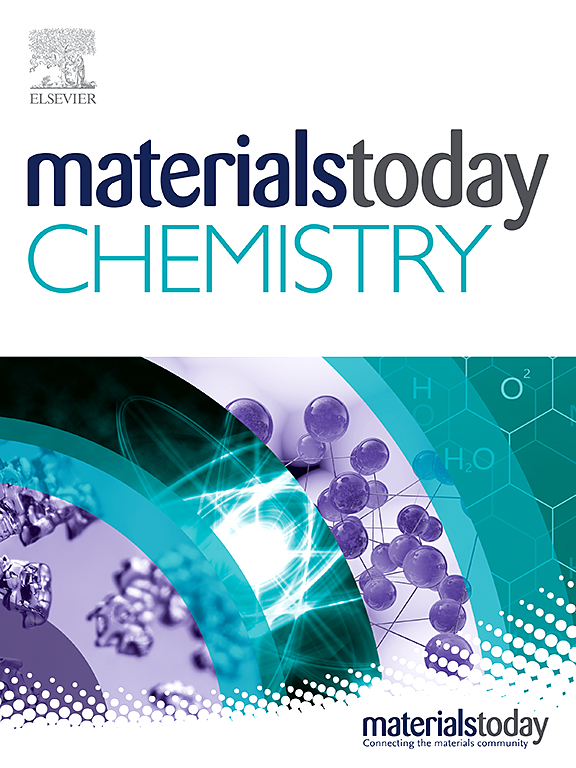Nitrogen-induced TiO2 electric field polarization for efficient photodegradation of high-concentration ethyl acetate: Mechanisms and reaction pathways
IF 6.7
2区 化学
Q1 CHEMISTRY, MULTIDISCIPLINARY
引用次数: 0
Abstract
Volatile organic compounds (VOCs) posed a significant threat to the sustainability of ecosystems and human health, and photocatalytic oxidation technology emerged as one of the promising strategies. In this work, N-doped TiO composites were prepared by ball milling utilized melamine as a precursor for the photodegradation of high-concentration ethyl acetate under visible light. The electric field polarization effect of TiO facilitated the exposure of active sites, promoting separation and migration of photogenerated carriers. DFT calculations further demonstrated that N–TiO possessed better electron transition capabilities and stronger pollutant adsorption abilities. Notably, the optimized N–TiO (9-N-P25) exhibited an ethyl acetate removal rate of up to 98.8 % (2000 ppm) under visible light irradiation, and the speed constant k values (0.09488 min) was 2.66 folds higher than that of pure TiO (0.03571 min). The ·O and ·OH free radicals played major roles in the photodegradation process, and the interaction mechanism between free radicals and pollutant molecules was analyzed through in-situ infrared. Additionally, the mechanism of photocatalytic degradation of ethyl acetate by N–TiO was further elucidated. This work provided new insights into the semiconductor photodegradation of high-concentration VOCs, offering novel pathways for removing VOCs in the atmospheric environment.氮引发的二氧化钛电场极化对高浓度乙酸乙酯的高效光降解:机理与反应途径
挥发性有机化合物(VOCs)对生态系统的可持续性和人类健康构成了重大威胁,而光催化氧化技术则成为一种前景广阔的策略。本研究利用三聚氰胺作为前驱体,通过球磨法制备了掺杂 N 的 TiO 复合材料,用于在可见光下光降解高浓度醋酸乙酯。TiO 的电场极化效应促进了活性位点的暴露,促进了光生载流子的分离和迁移。DFT 计算进一步证明,N-TiO 具有更好的电子转换能力和更强的污染物吸附能力。值得注意的是,优化的 N-TiO (9-N-P25) 在可见光照射下的乙酸乙酯去除率高达 98.8 %(2000 ppm),速度常数 k 值(0.09488 分钟)比纯 TiO(0.03571 分钟)高出 2.66 倍。-O和-OH自由基在光降解过程中发挥了重要作用,并通过原位红外分析了自由基与污染物分子的相互作用机理。此外,还进一步阐明了 N-TiO 光催化降解醋酸乙酯的机理。这项工作为半导体光降解高浓度挥发性有机化合物提供了新的见解,为去除大气环境中的挥发性有机化合物提供了新的途径。
本文章由计算机程序翻译,如有差异,请以英文原文为准。
求助全文
约1分钟内获得全文
求助全文
来源期刊

Materials Today Chemistry
Multiple-
CiteScore
8.90
自引率
6.80%
发文量
596
审稿时长
33 days
期刊介绍:
Materials Today Chemistry is a multi-disciplinary journal dedicated to all facets of materials chemistry.
This field represents one of the fastest-growing areas of science, involving the application of chemistry-based techniques to the study of materials. It encompasses materials synthesis and behavior, as well as the intricate relationships between material structure and properties at the atomic and molecular scale. Materials Today Chemistry serves as a high-impact platform for discussing research that propels the field forward through groundbreaking discoveries and innovative techniques.
文献相关原料
公司名称
产品信息
阿拉丁
sodium sulfate anhydrous
阿拉丁
2,2,6,6-Tetramethylpiperidoxyl
阿拉丁
p-benzoquinone
阿拉丁
potassium bromide
阿拉丁
ethyl alcohol
阿拉丁
melamine
阿拉丁
Titanium dioxide
 求助内容:
求助内容: 应助结果提醒方式:
应助结果提醒方式:


